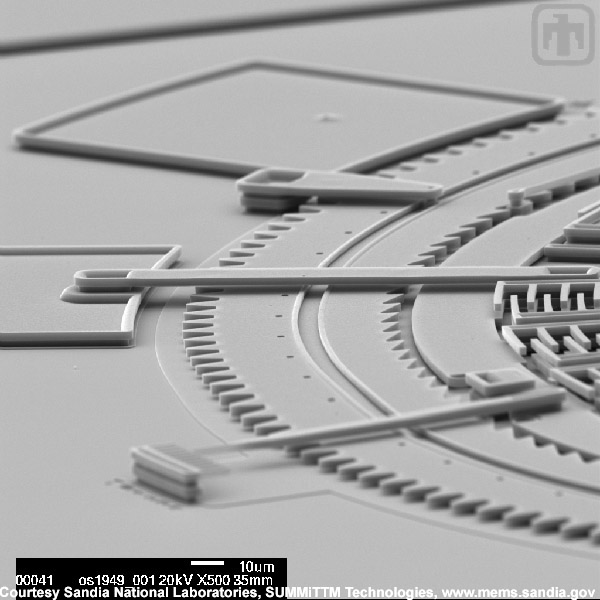New Theory: How to Make Objects Invisible

High-tech cloaking machines could one day render very small objects nearly invisible and perhaps improve military stealth technology, scientists said Monday.
The idea is straight out of science fiction -- cloaking technology made Romulan spaceships disappear in Star Trek. A humble version of the device could become a reality, according to Nader Engheta and Andrea Alu of the University of Pennsylvania.
But don't expect to hide yourself or your spaceship anytime soon, at least not in the standard sense of invisible. In practical terms, the research is more likely to lead to improved technical and research devices, and even these applications are years away.
How it would work
The proposal involves using plasmons -- tiny electronic excitations on the surfaces of some metals -- to cancel out the visible light or other radiation coming from an object.
"A proper design ... may induce a dramatic drop in the scattering cross-section, making the object nearly invisible to an observer," Nader and Alu write in a scientific paper that was made available to the public Feb. 14.
But cloaking ability would depend on an object's size, so that only with very small things -- items that are already microscopic or nearly so -- could the visible light be rendered null. A human could be made impossible to detect in longer-wavelength radiation such as microwaves, but not from visible light.
Get the world’s most fascinating discoveries delivered straight to your inbox.
A spaceship might be made transparent to radio waves or some other long-wavelength detector.
The idea is in an infant stage but appears not to violate any laws of physics, according to an article Monday in news@nature.com, an online companion to the journal Nature, which provided advance copies of the story to reporters.
"The concept is an interesting one, with several important potential applications," John Pendry, a physicist at Imperial College in London in the UK, told the publication. "It could find uses in stealth technology and camouflage."
But Engheta, co-developer of the idea, said such applications can't even be considered yet.
"Things like airplanes are very complex objects -- complex shape and complex materials -- and I do not know to what extent our concept can be applicable to that," Engheta told LiveScience. "We are still in the conceptual stage, and there are several important questions that have to be answered before any practical scenario can be considered."
Plasmons are real
You've seen cloaking technology at work on television, when blue backgrounds are used to make a person invisible. Alu and Engheta envision something far more sophisticated.
Objects are visible in the optical range because they reflect light, a process scientists call scattering. Objects absorb light, too, and what is absorbed is not seen. The sky is blue because the atmosphere scatters blue light more than red.
A plasmonic cloaker would resonate with a particular wavelength of light, so that the wavelength would not scatter.
Plasmons are real, a product of a strange characteristic of light, which is made up of both particles and waves. Plasmons are created when electrons on the surface of a metallic material move in rhythm. They have other odd properties.
Back in 1998, researchers led by Thomas Ebbesen of the Louis Pasteur University in Strasbourg, France shone light on a sheet of gold foil that contained millions of tiny holes. The holes were smaller than the wavelength of the light, and Ebbesen expected no light to get through. Amazingly, more light came out the other side than what hit the holes.
Follow-up research found that plasmons -- jittery little waves on the surface of the metal -- were snagging light and stuffing it through the holes. "When the energy and momentum of the photons match the energy and momentum of the plasmons, the photons are absorbed and radiated again on the other side," according to an article in the May 1998 edition of Photonics Spectra magazine.
Reality sets in
Engheta and Alu say objects coated with perhaps loops or coils of silver or gold might do the trick.
But there are many hurdles. It is not clear how even a small object could disappear in daylight, which itself contains many different wavelengths, or colors, of light. Presumably a plasmonic device would have to be built to cloak each wavelength.
Anything not perfectly ball-shaped presents additional problems. The researchers' calculations suggest "homogeneous spherical objects" in the nanoscale range -- really, really small -- could be rendered optically invisible.
Practically speaking, the technology, if developed, might be used in antiglare materials or to improve microscopic imaging in about five years, Engheta said.
Small Stuff
Micromachines
Microscopic Images as Art
Robert is an independent health and science journalist and writer based in Phoenix, Arizona. He is a former editor-in-chief of Live Science with over 20 years of experience as a reporter and editor. He has worked on websites such as Space.com and Tom's Guide, and is a contributor on Medium, covering how we age and how to optimize the mind and body through time. He has a journalism degree from Humboldt State University in California.
 Live Science Plus
Live Science Plus







